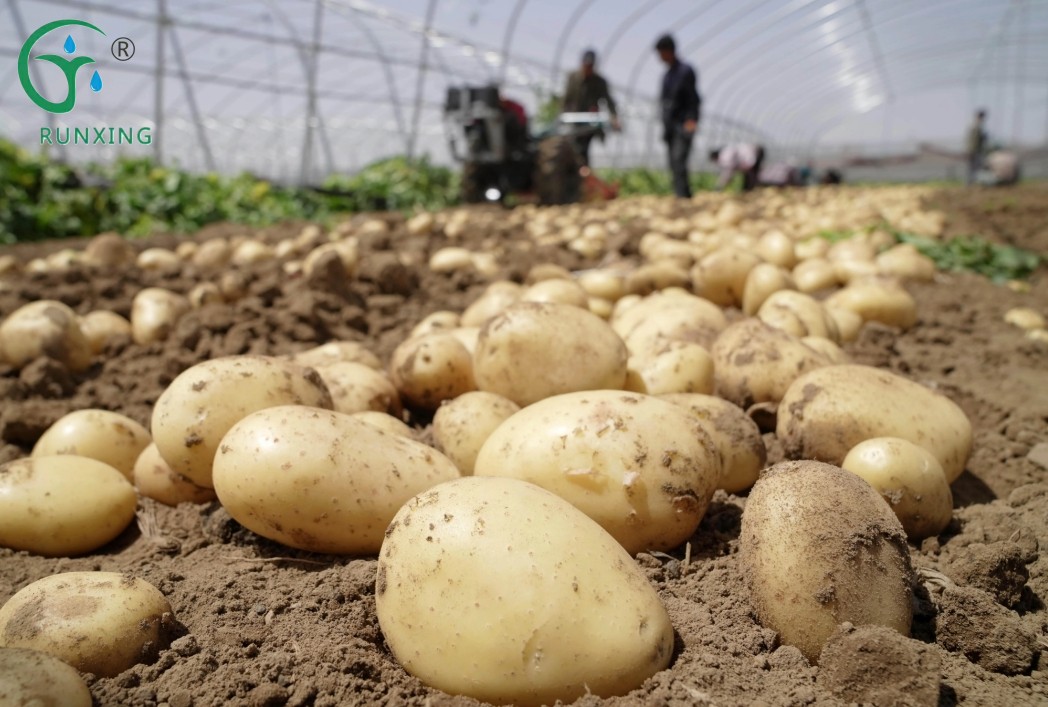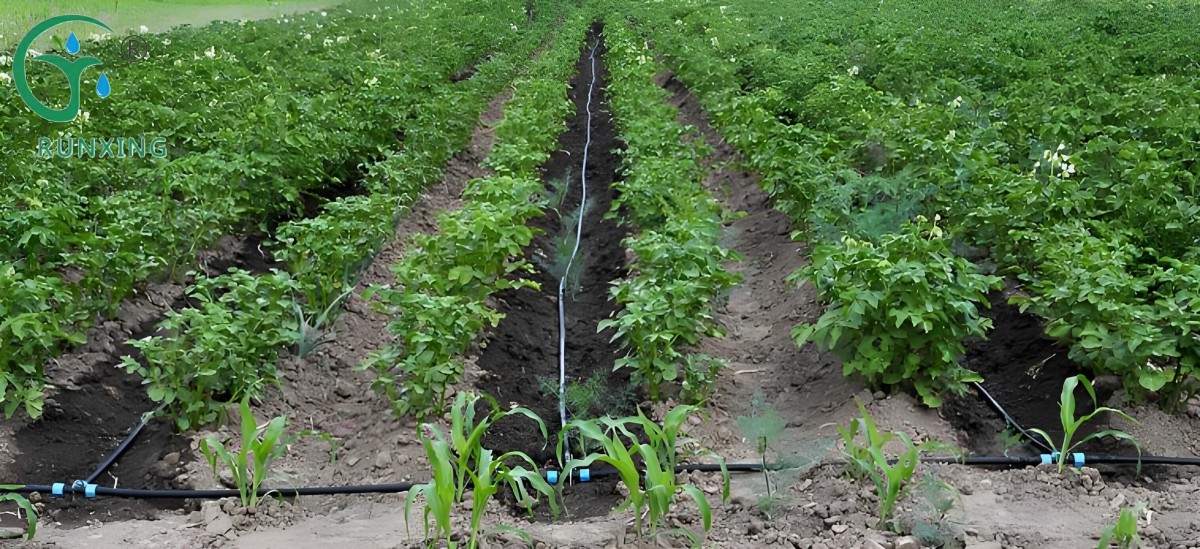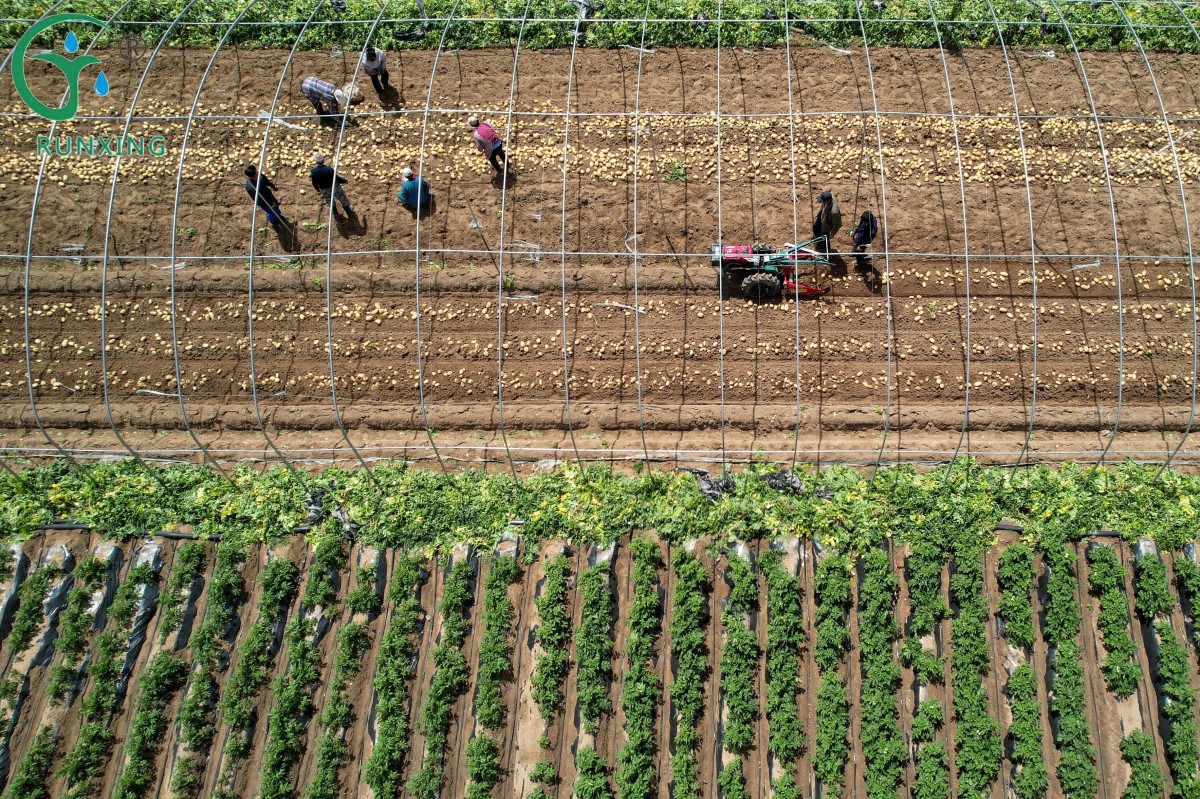Potato Cultivation in Brazil and the Necessity of Drip Irrigation Systems
In tropical climates like Brazil, potato cultivation not only requires ample sunshine and fertile soil but also necessitates scientific water management. Drip irrigation systems, as an efficient irrigation method, play a vital role in increasing yields, conserving water resources, and reducing pests and diseases. Below, we will delve into the application of drip irrigation in potato cultivation in Brazil, the required equipment, installation methods, water usage control, and cultivation tips.

Do Potato Plants in Brazil Need Drip Irrigation Systems?
In Brazil, drip irrigation systems are highly essential for potato cultivation. Due to uneven rainfall patterns in some regions, soil moisture management becomes a crucial factor in enhancing potato yields. Drip irrigation ensures that water is delivered uniformly and slowly to the crop roots, reducing evaporation and waste while improving water use efficiency. Additionally, drip irrigation can be combined with fertilization, achieving integrated water and fertilizer management, further boosting yield and quality.
What Drip Irrigation Equipment is Needed?
Drip irrigation equipment primarily includes drip tapes, drip lines, fertigation devices, and filters.
Drip Tapes: Drip tapes utilize plastic hoses to deliver water through holes or drippers on 16mm diameter tubing directly to the crop roots. They come in various types, such as continuous patch, side seam, double-walled, and in-line embedded.
Drip Lines: Drip lines, including in-line embedded and columnar types, offer higher pressure resistance and durability.
Fertigation Devices: Fertigation devices are used to inject soluble fertilizers or pesticide solutions into the drip irrigation system, enabling integrated water and fertilizer management. Common fertigation devices include pressure-differential fertigation units and fertigation pumps.
Filters: Filters prevent impurities from clogging the drip irrigation system, ensuring smooth operation.

How to Lay and Install Drip Irrigation Equipment?
Layout Principles: Drip tapes should be laid along the potato ridges, ensuring each potato plant receives uniform water supply. The spacing between drip tapes should be determined based on potato planting density and soil conditions, typically ranging from 30-50 cm.
Installation Method: Drip tapes should be laid on the soil surface or shallowly buried to avoid damage from wind, sunlight, etc. Before placing the drip tapes, check for any damage or leaks to ensure smooth operation.
Connection and Testing: Drip tape connections should be secure to prevent leaks during use. After installation, conduct system testing to ensure proper operation.
How Much Water is Needed and How to Control It?
Potato water requirements vary based on climate, soil, and variety. Generally, each potato plant requires approximately 150 liters of water to produce about 1.5 kg of potatoes. Drip irrigation systems can precisely control water usage by adjusting drip frequency and volume according to potato growth needs. In practice, drip irrigation parameters should be adjusted based on local climate conditions and potato growth stages.
How to Better Cultivate Potatoes?
Apart from drip irrigation, the following cultivation tips can also improve potato yield and quality:
Soil Selection, Preparation, and Fertilization: Choose loose, fertile, organic-rich, well-drained soil with deep soil layers for planting. Conduct deep tillage and apply fully composted manure and nitrogen-phosphorus-potassium controlled-release fertilizers before sowing.
Seed Preparation: Select potato varieties suitable for local conditions and perform cutting and disinfection. After cutting, apply fresh wood ash to disinfect and promote wound healing.
Reasonable Planting Density: Determine the appropriate planting density based on soil and climate conditions to ensure sufficient growth space, ventilation, and light exposure for potato plants.
Enhanced Field Management: Conduct soil cultivation, hilling, weeding, and irrigation after potato emergence. Apply growth regulators to control excessive vegetative growth before flowering if necessary. Meanwhile, pay attention to pest and disease control to ensure smooth potato growth.
Foliar Fertilization: In the late growth stage, apply foliar fertilizers such as potassium dihydrogen phosphate to increase yield and quality. Foliar fertilizers are quickly absorbed and effective, directly providing nutrients to the tubers.

Through scientific water management, proper drip irrigation equipment installation, and meticulous field management, potato cultivation in Brazil can achieve high yields and efficiency. We hope the above content provides useful guidance and reference for farmers.
If you have any needs, please contact us.
About Us
We are dedicated to offering innovative, water-saving, and labor-saving irrigation solutions for agriculture worldwide. Our focus on quality and continuous innovation drives the development and progress of the industry
LOGO
This stunning beach house property is a true oasis, nestled in a serene coastal community with direct access to the beach.
Opening Hours
Monday - Friday : 9AM to 5PM
Sunday: Closed
Closed during holidays
Contact
+18888888888
hezuo@eyingbao.com123 West Street, Melbourne Victoria 3000 Australia
